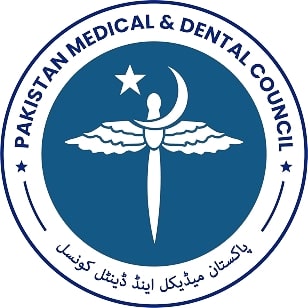PENICILLIN: A JOURNEY FROM A MAGIC BULLET TO A RESISTANT DRUG
DOI:
https://doi.org/10.59058/jaimc.v20i1.16Abstract
The year 2022 marked the 81st anniversary of first systemic administration of Penicillin in humans. It was undoubtedly a biggest milestone and a game changer in practice of modern medicine. The discovery of Penicillin was a lucky mistake happened in 1928. Dr Alexander Fleming, an English bacterio- logist working in St.marry’s Hospital London left his laboratory for holidays leaving few of his petri dishes openly near window on a bench. Upon his return from holidays few days later, while sorting out these Petri dishes, he realized that in one of these dishes colony of staphylococci bacteria was contaminated with unusual mould growth, which had restricted further bacterial growth in petri dish. This fungus was named Penicillium notatum. Fleming extracted a compound from this mould and named it Penicillin. This compound was able to restrict the bacterial growth in his experiments. He submitted his observations in British Journal of experimental Pathology in 1929, yet few noticed thisdiscovery. Dr Fleming gathered a team of chemists and tried to purify the penicillin from mould, with little success until 1937, when a team of dedicated scientists used Fleming’s discovery to produce Penicillin on mass scale. From this point onward, there was no stopping of improvement in production of this wonder drug, which saved millions of lives and reduce suffering during second World War. Nevertheless, misuse of this wonder drug led to a menace of antibiotic resistancein our modern medical practice.
Antimicrobial Resistance, under the slogan “Combat drug resistance” was the theme for World Health Day during 2011. This highlighted the need to create an awareness for using antibiotics judiciously in post-Fleming era and prescribe these wonder drugs not as a “convenience” tool to blanket killing of microbes. Consequently, there are reports of unprecedented fata- lity associated with drug resistant infections, which is alarming.
The pace of novel antibiotics development has been slow over the decades compared with the resistance against antimicrobial drugs, especially against tuber- culosis and malaria. Apart from anti-bacterial medicine, we have observed resistance against anti-viral, anti- fungal and anti-protozoal drugs. It has been estimated that there are almost ten million deaths worldwide attributed to antimicrobial drug resistance. Although, a globally widespread phenomenon, antimicrobial resistance is a huge problem in developing countries, where people’s host defense systems are weaker dueto issues pertaining to malnutrition, medical systems are run without standardized guidelines (malpractice) and easy availability of counterfeitmedicine. Poor infection control practices are also another factor asso- ciated with high infection burden and lack of Drugstewardship programmes lead to underuse or misuse of antibiotics in both animal and human health sectors, resulting into a surge of Superbugs resistant to currently available antibiotics.This state of affairs if overlooked may result in few choices available to physicians to tackle infections and consequent loss of life and misery to patients.
The situation in Pakistan is grave as the rate of antibiotic consumption has increased by 65% (0.8 to 1.3 billion defined daily doses) in a span of just fifteen years from 2000 to 2015.Pakistan already ranks among top five countries with respect to neonatal deaths resulting from resistant bacteria. Other contri- butory factors are trends of self-medication, unnece- ssary number of registered products, non-compliance to WHO’s guidelines in drug prescription (>3 drugs/ prescription).This overuse and abuse of antibiotics is making situation grimmer.Abig chunk of this menace is being contributed by animal and agriculture sector where antibiotics are being used as growth promoters without any regulation. Antibiotics which are common for human use such as Penicillin, Lincosamides, Macrolides, aminoglycosides, sulfonamides and fluo- roquinolones are being used as well as in farm and Poultry animals.
World Health Organization (WHO) urges the world for a multi-sectoral collaboration as highlighted in Global Antimicrobial Resistance (AMR) Surveill- ance System (GLASS) developed in 2015. This document shifts the focus of activities from routine laboratory services to epidemiological, clinical and population level data. In light of this document, regional and national action plans are to be developed and imple-mented. The key factor for the success of such action plans lies in the multi-sectoral approach. Human, animal, food, environment, fisheries and other depart-ments should coordinate, collaborate, share data and work together to combat AMR.
Pakistan has developed the National Action Plan for containment of AMR. Ministry of National Health Services, Regulations and Coordination (MNHS&RC) has been given a lead role for regulation, strategic frame- work, collaboration and direct service provision. The National Institute of Health (NIH) Islamabad has been declared as a national focal point for AMR and inter- national Health Regulation (IHR). The National Vete- rinary Laboratory (NVL) for Livestock and the National Reference Laboratory for Poultry Diseases, under the Ministry of National Food Security and Research (MNFSR) are the designated national reference labo- ratories for the animal health sector.
Monitoring and surveillance are the pivotal players for containment of AMR that requires quality assured microbiology. Unfortunately standardized laboratory services are lacking in both Public and private sector in Pakistan which yields compromised data. This deficiency of data quality in tackling AMR is further augmented by lack of data sharing. Access, watch and Reserve (AWaRe) Tool by WHO has categorized the antibiotics into three groups i.e available all times, to be used sparingly and reserved for last resort for infec- tions. Hospitals should develop and ensure strict compliance to such tools to be good stewards of miracle drugs which have been saving lives for years.
Coherent National and international efforts encom- passing all stakeholders across animal, human, environment and food sectors are required to halt the journey of “Wonder drugs” from becoming resistant and worth- less weapon against infection control.
Downloads
Published
How to Cite
Issue
Section
License
Copyright (c) 2022 JAIMC: Official Journal Of Allama Iqbal Medical College

This work is licensed under a Creative Commons Attribution 4.0 International License.
The articles published in this journal come under creative commons licence Attribution 4.0 International (CC BY 4.0) which allows to copy and redistribute the material in any medium or format Adapt — remix, transform, and build upon the material for any purpose, even commercially under following terms.
-
Attribution — You must give appropriate credit, provide a link to the license, and indicate if changes were made. You may do so in any reasonable manner, but not in any way that suggests the licensor endorses you or your use.
- No additional restrictions — You may not apply legal terms or technological measures that legally restrict others from doing anything the license permits.
The editorial board of the Journal strives hard for the authenticity and accuracy of the material published in the Journal. However, findings and statements are views of the authors and do not necessarily represent views of the Editorial Board. Many software like (Google Maps, Google Earth, Biorender (free version)) restricts the free distribution of materials prepared using these softwares. Therefore, authors are strongly advised to check the license/copyright information of the software used to prepare maps/images. In case of publication of copyright material, the correction will be published in one of the subsequent issues of the Journal, and the authors will bear the printing cost.










